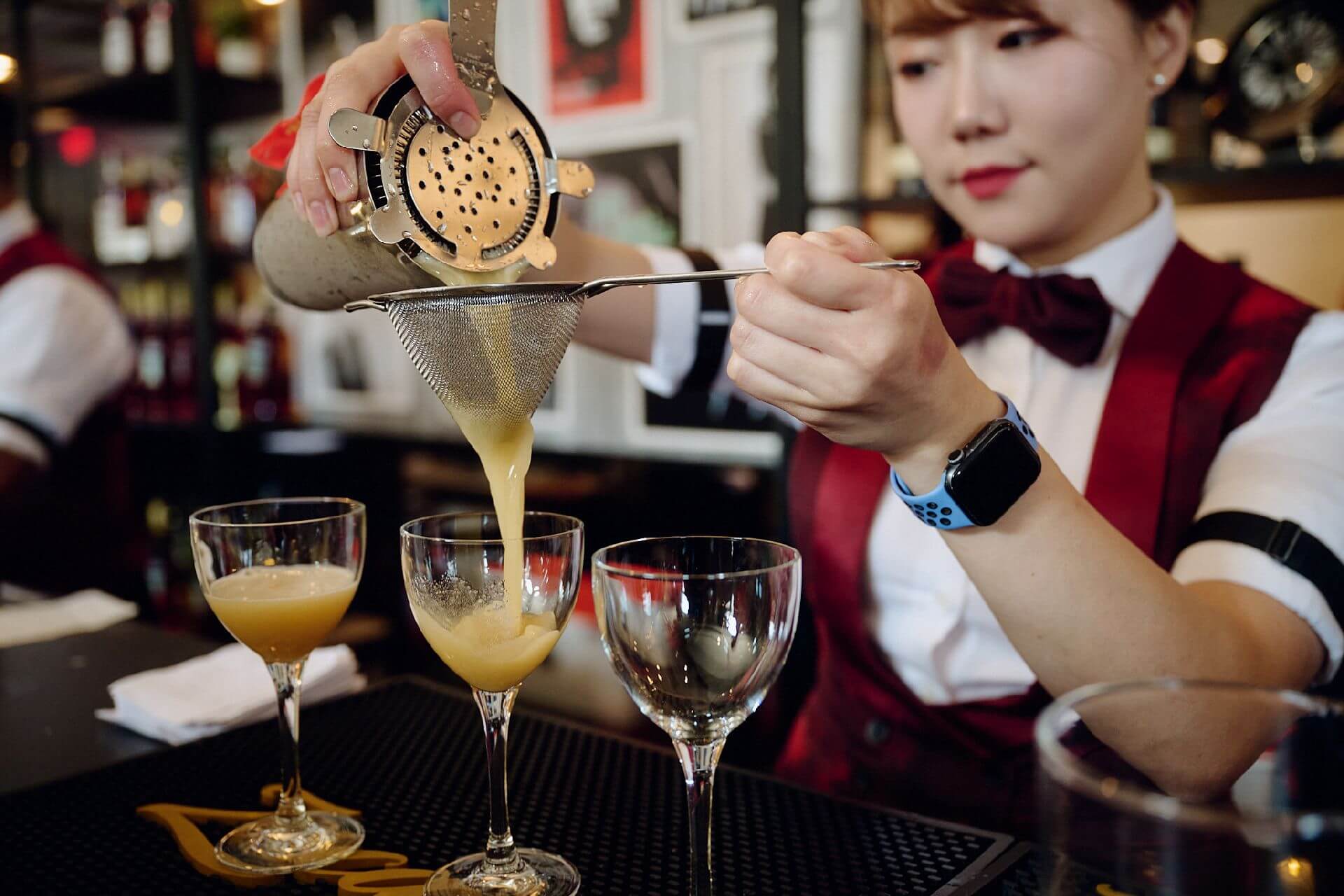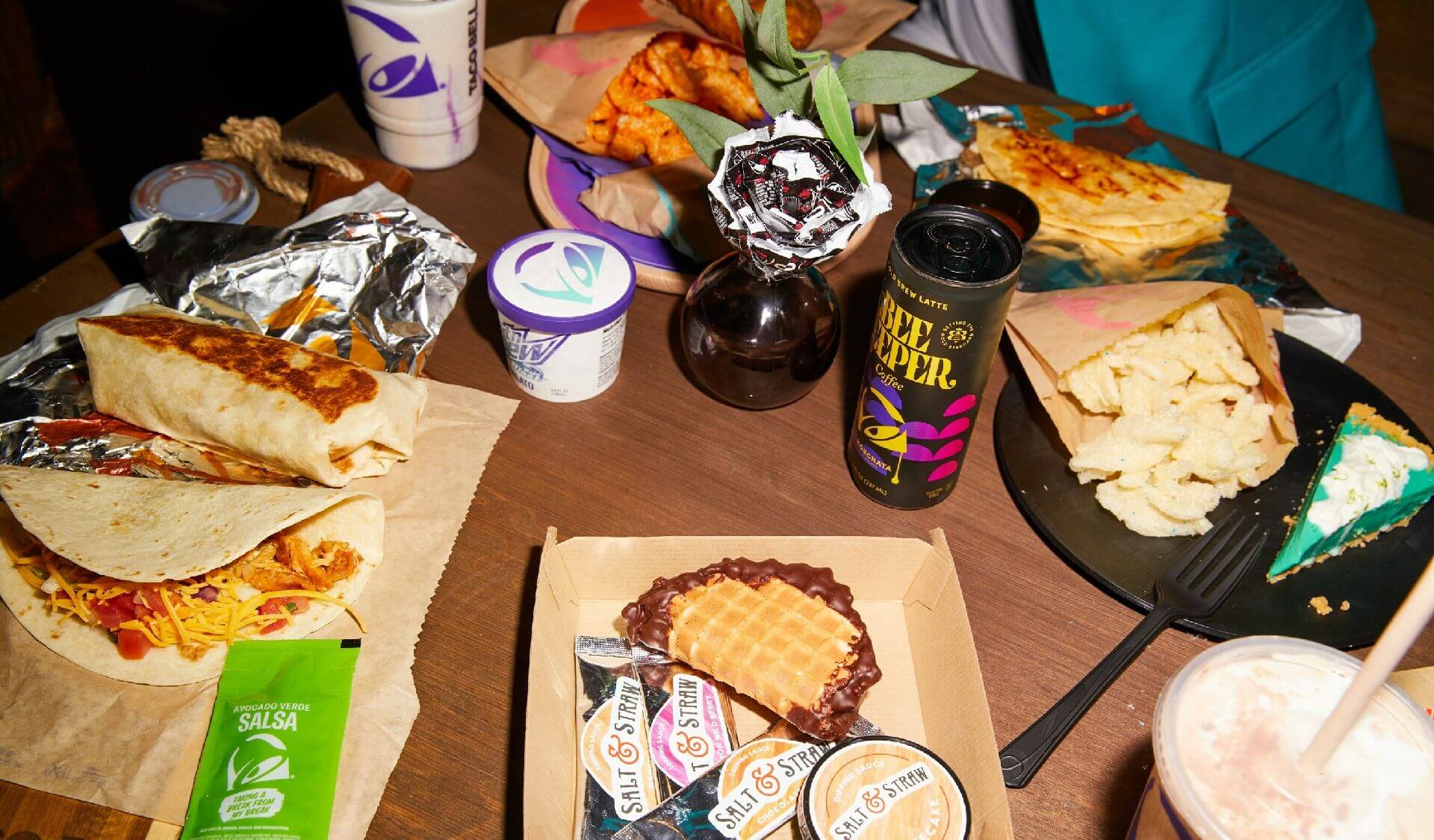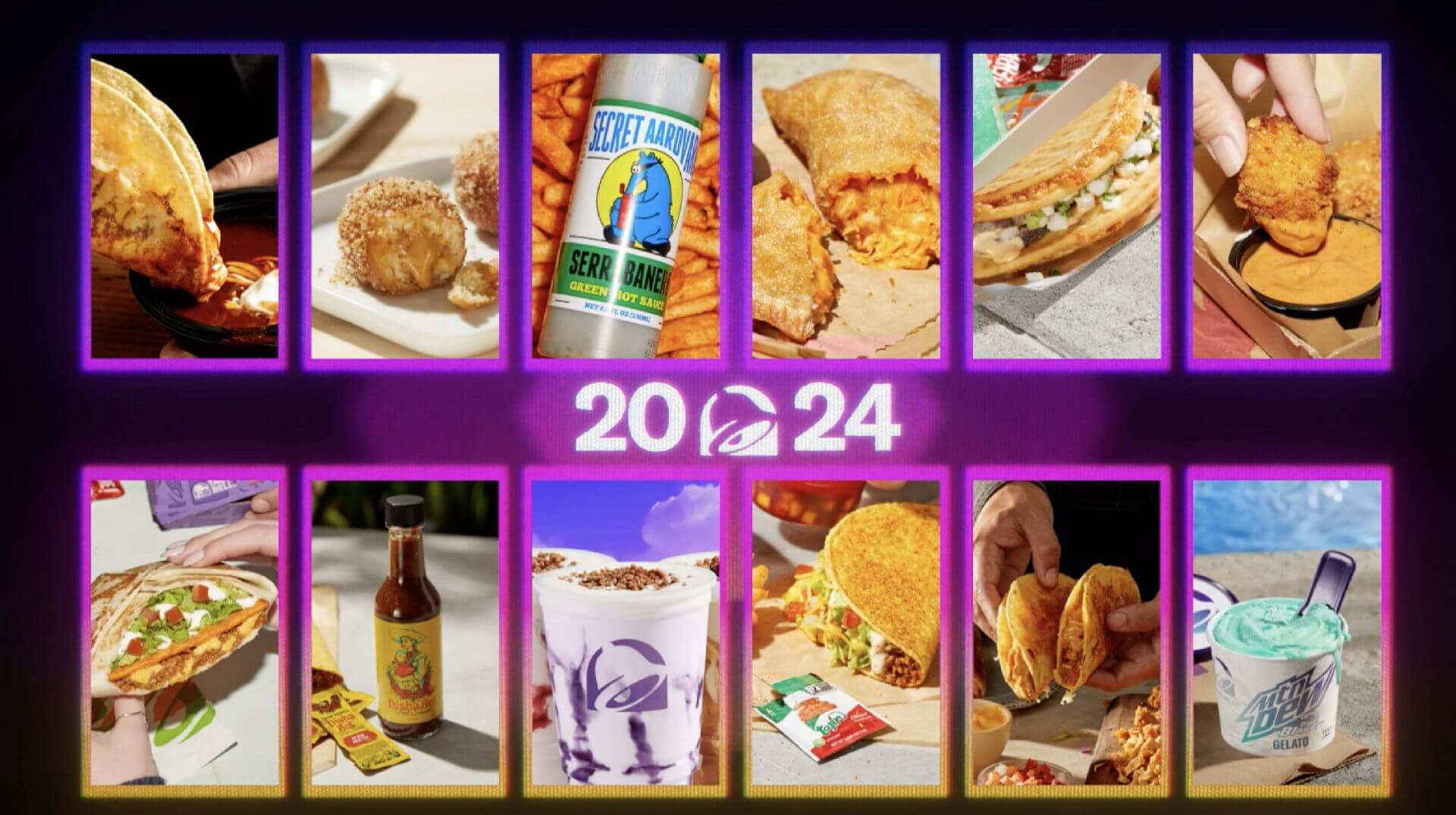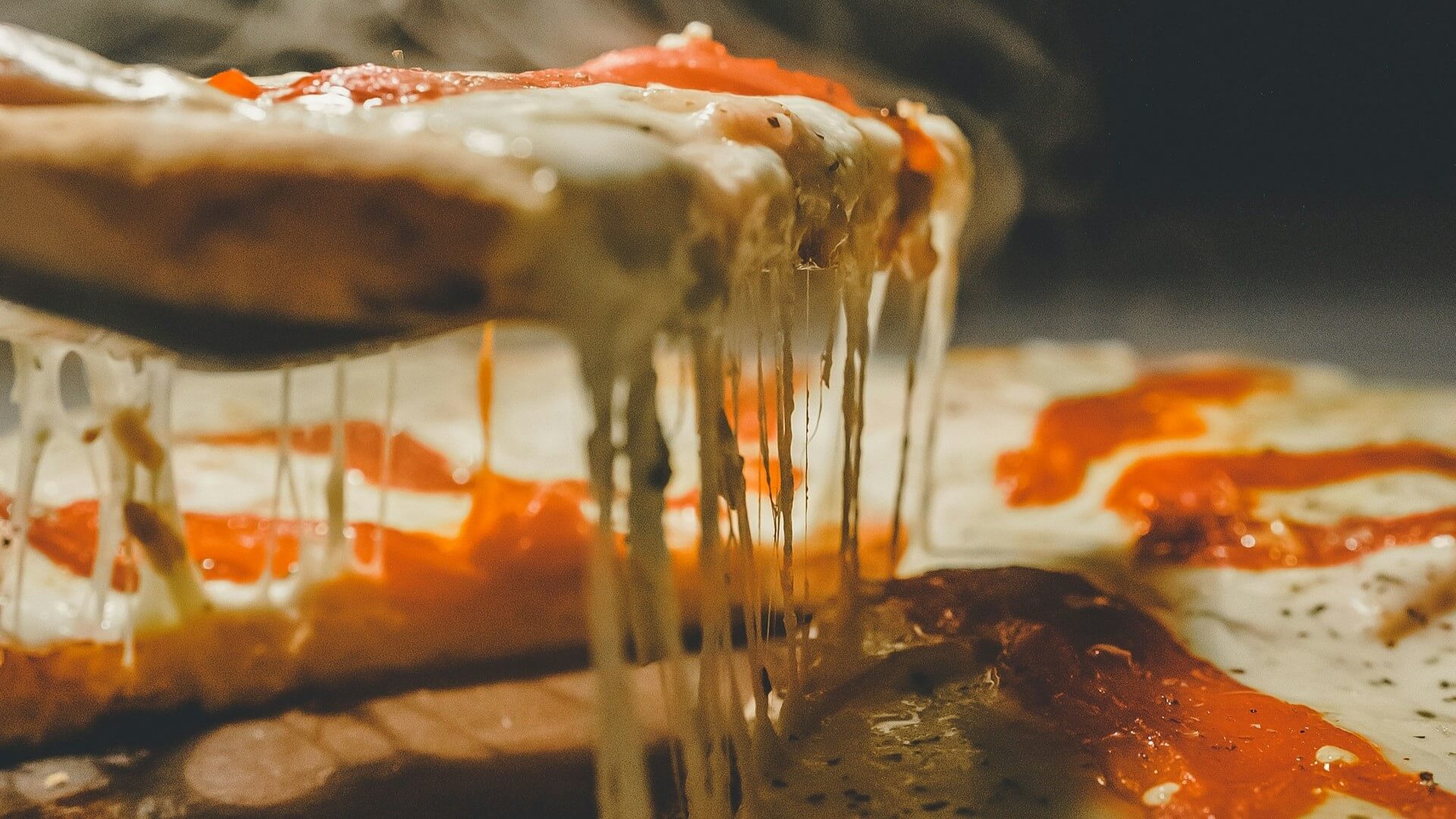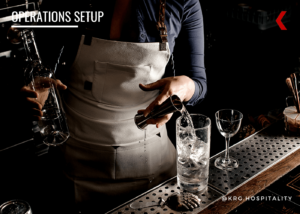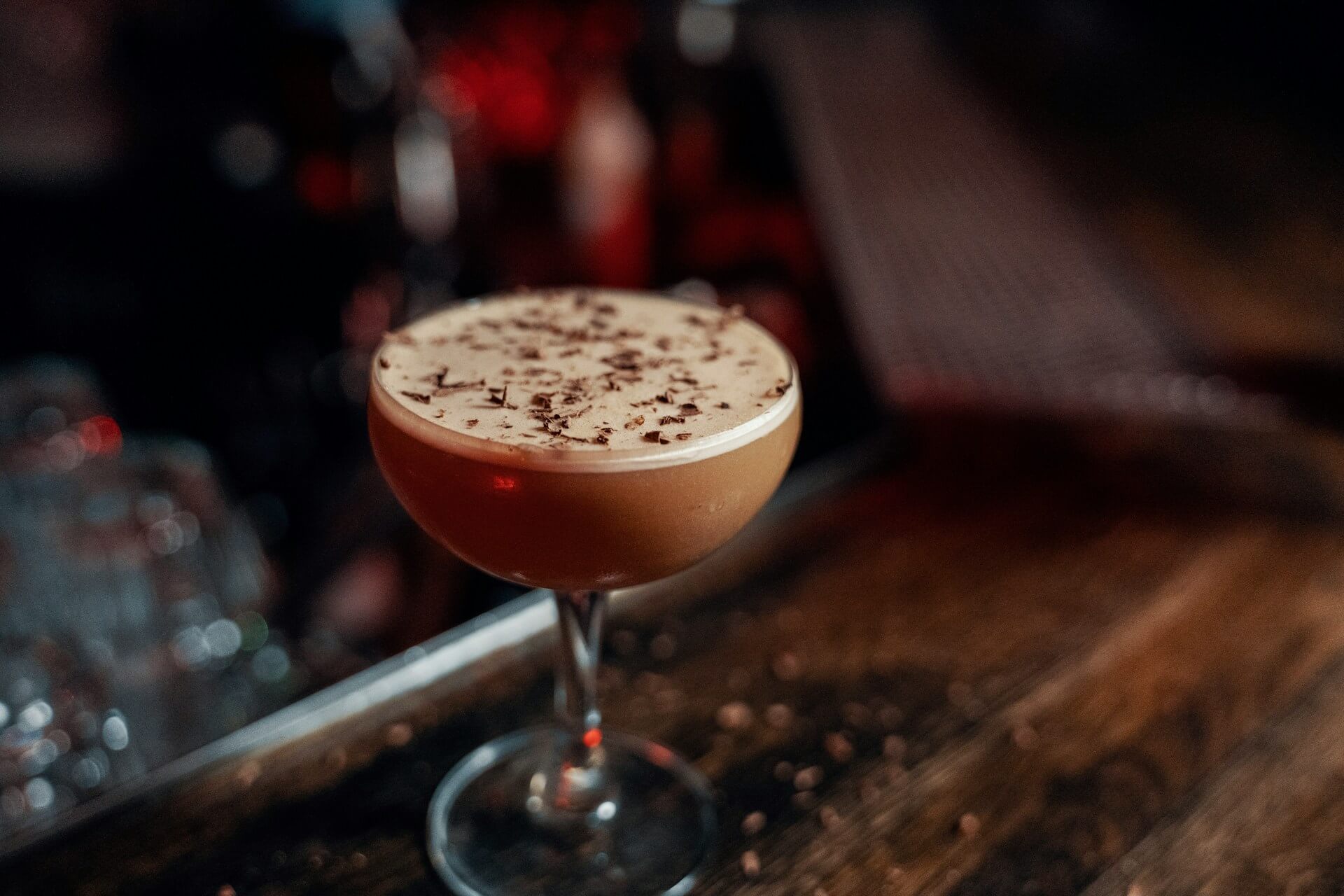A Few of Our Favorite WSWA Access LIVE Things
by David Klemt

We attended WSWA’s Access LIVE 2024 event in Las Vegas, Nevada, and found quite a few products we think will pique the interest of restaurant and bar operators.
Agave spirits, perhaps unsurprisingly, seemed to dominate the floor. In particular, tequila was very well represented.
However, we also found notable vodkas, gins, whiskeys, sake, liqueurs, zero-proof beverages, and more. Below, several portfolios and items that really stood out to us.
Cheers!
Portfolio
Deluxe Distillery
This distillery, operating out of Belgium, has some of the most striking packaging I’ve seen in a while. I’m confident in saying that guests scanning a back bar would find Deluxe Distillery‘s bottles intriguing.
More importantly, of course, the liquid is just as outstanding. Deluxe produces three gins under the Blind Tiger label: Piper Cubeba, Imperial Secrets, and barrel-aged Liquid Gold. Their vodka, Mary White, pays homage to a famous bootlegger. And then there’s Yusibi, a honey-based aperitif in a unique bottle.
However, it’s Deluxe’s Sūpāsawā that really grabbed my attention at Access LIVE. This product, available in 30 states in the US already, makes batching not just a breeze but a more budget-friendly proposition. Cost per bottle should run around $9. The prebatched cocktail Deluxe Distillery was serving at their booth took less than five minutes to make.
As far as entire portfolios, Deluxe stood out the most to me.
Agave
Inspiro Tequila
This is clean tequila brand needs to be on your radar. There are currently two Inspiro Tequila expressions, Luna Blanco and Rosa Reposado. Both premium tequilas can be enjoyed neat, and Rosa is rested in rosé wine barrels sourced from France.
Inspiro is woman-owned, confirmed additive-free, certified Kosher, gluten-free, sugar-free, and zero carb. Oh, and the bottles are eye-catching.
Sepulto Mezcal Artesanal
This artisanal mezcal launched at this year’s Access Live event. And yes, this is another case of the bottle catching my eye and drawing me in.
Sepulto is aged for one year in glass, underground. As a result of the distiller’s cooking process, the complex notes of espadín, sahuayo, and papalote agaves come through with each sip. This is definitely a mezcal you’ll want to add to your super-premium agave spirits. In fact, it will be right at home on your back bar and menu next to your Don Julio 1942.
Vodka
Tenjaku Japanese Vodka
Don’t let the clean label fool you: Tenjaku is as fun a brand as it is a premium vodka. Click here to check out their packaging, which drives home my point.
Speaking of premium quality, Tenjaku Vodka is made from Yamada Nishiki rice, which is also used to make some of the best sake in the world. Further, the liquid is filtered not just through birch charcoal but also bamboo charcoal. The result is a vodka that tastes fresh and is delicate on the palate.
Herbesco Pepper Vodka
Looking for a great vodka that can serve as a spicy base for Bloody Marys and other hot cocktails straight from the bottle?
Herbesco Pepper Vodka is made with jalapeño, japones, chile de árbol, and bell pepper. Along with heat, expect herbal, fruity, and even chocolatey notes.
Gin
The Illusionist Dry Gin
Those familiar with Empress are familiar with what gives the gin its hue and color-shifting capability: butterfly pea flower. That botanical is also present in The Illusionist, which comes in a stylish, black Art Nouveau bottle.
Certified organic, The Illusionist delivers more than just visual impact. On the nose, licorice and citrus. Those notes are also present on the palate, along with fruity and floral flavors.
Whiskey
Yame Whisky
This Japanese whisky was introduced to me by Wine of Japan, an incredible portfolio of ultra-premium sake, beer, and spirits. Anyone who wants to add the highest quality sake from Japan need look no further. (In fact, I’ve been looking for a specific sake for over a decade. The VP or Wine of Japan knew exactly what I was talking about and had a sample at the booth. Amazing.)
Two expressions were available to try at Access LIVE, the 10 Year and 15 Year. The 10 Year features a 100-percent barley mashbill and is very easy to drink, delivering notes of vanilla and citrus. Think an easy-sipping bourbon. I found the 15 Year to a bit more complex, delivering dried fruit and grain on the palate. However, I had also sampled quite a few sake before trying this whisky.
In other words, you’re going to have to reach out to Wine of Japan and get tasted on both Yame expressions.
Tenjaku Whisky
There are two Tenjaku Whisky expressions currently: Blended and Pure Malt.
The former is sweet on the nose, with a touch of smoke. On the palate, Tenjaku Blended delivers grain, dried fruit, and a bit of spice.
The latter, Pure Malt, has nutty aroma with herbal notes. Expect wood and vanilla on the palate.
Niche
Wheyward Spirit
I could include woman-owned, operated, and distilled Wheyward in the whiskey category, but it’s too unique for that. The two available expressions are produced by upcycling whey.
Wheyward Spirit, the original expression, can stand in for vodka, gin, rum, sake, and even blanco tequila. The brand itself explains this innovative spirit quite succinctly: “Wheyward Spirit is one of a kind and was designed to take the best elements of vodka, sake, gin, and rum to be both a versatile and sippable clear spirit.”
There’s also Wheyward Spirit Wheyskey. Now that you’re familiar with the original, you can probably guess that this is a whey-based alternative to whiskey. This expression is barrel-aged Wheyward Spirit, and, like the original, is additive-, grain-, gluten-, and lactose-free. When I tasted Wheyskey, it most closely resembled a rye whiskey to me.
Alcohol-free
De Soi
“Savor the flavor, lose the booze, put the ‘fun’ in ‘functionality,’ and embrace the pleasure of restraint,” says non-alcohol brand De Soi.
This range of zero-proof apéritifs is loaded with interesting flavors, such as sparkling Très Rosé, citrusy and herbaceous Golden Hour, and jammy and bitter Champignon Dreams.
Operators looking to add sophisticated and unique non-alcohol beverage options should definitely look into De Soi.
Sparkling Wine
Rozoy Picot
If the production of this French sparkling wine didn’t involve a unique twist, I’m told Rozoy Picot would legally be Champagne.
However, these sparkling wines are blended with terpenes, the aromatic elements of cannabis. (Remember, terpenes don’t contain psychoactive elements, so this product doesn’t get you high.)
There’s a white varietal, Rozoy Picot OG Kush, and a red, Punch Rosé. I can only say that these must be smelled and tasted to be understood fully. Additionally, I can see these performing well at nightclubs as a unique bottle service option.
Image provided by author.


